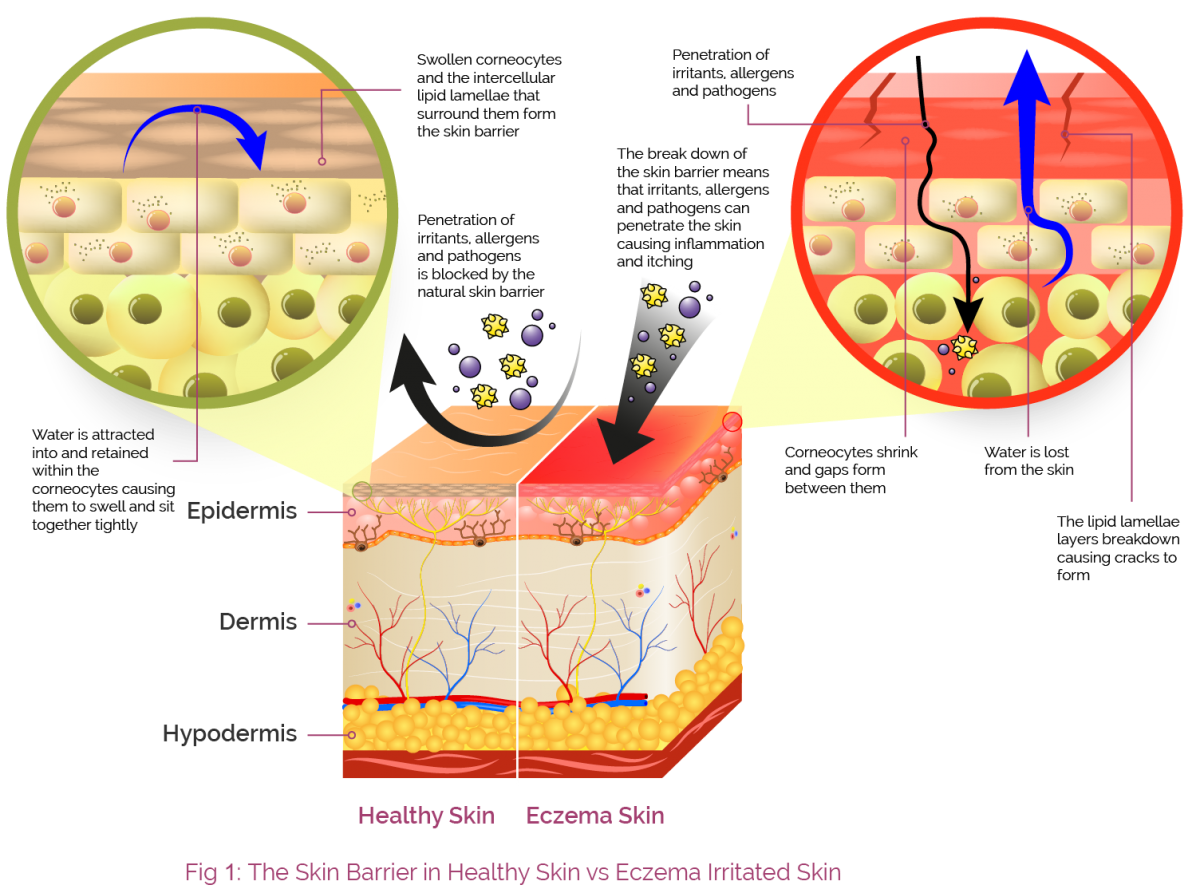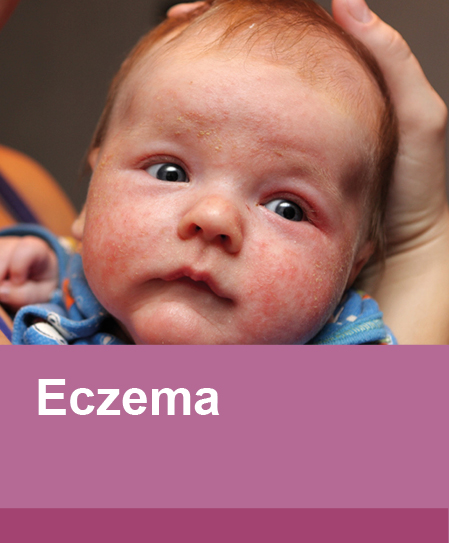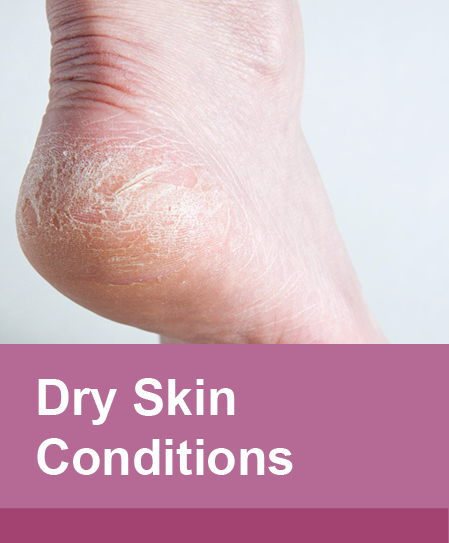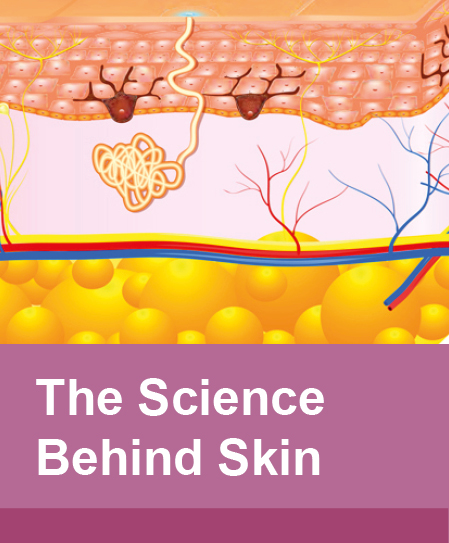Our skin is made up of three main layers: the epidermis, the dermis and the hypodermis. The epidermis consists of 5 smaller layers: the stratum basale, the stratum spinosum, the stratum granulosum, the stratum lucidum and the uppermost layer, known as the stratum corneum, which is the skin barrier.
In order to help us understand what happens in eczema and other dry skin conditions we first need to know what a healthy skin barrier looks like and what it does. The best way to think of this barrier is as a brick wall whose function is to keep out irritants, allergens and pathogens whilst preventing the loss of water and other substances from the skin. The individual bricks within this wall are called corneocytes (anucleated keratinocytes) and the intercellular lipid lamellae which surround them are the mortar. This lipid lamellae is composed of phospholipids, cholesterol and glucosylceramides. In healthy skin, this brick wall is solid without any cracks or crumbling mortar, as shown in the healthy skin side of Fig 1.











